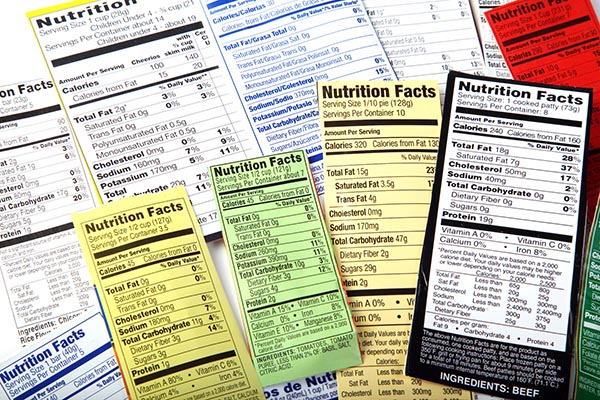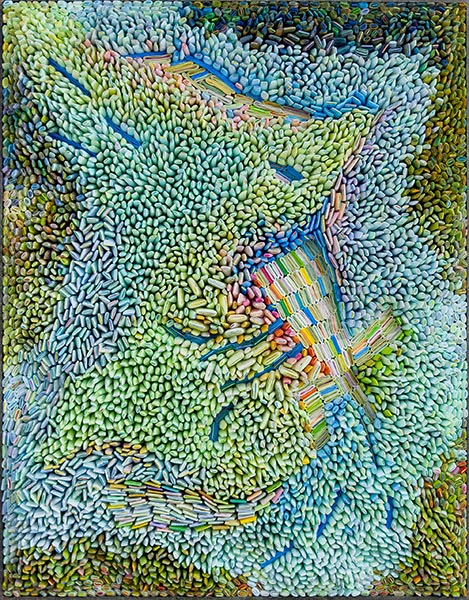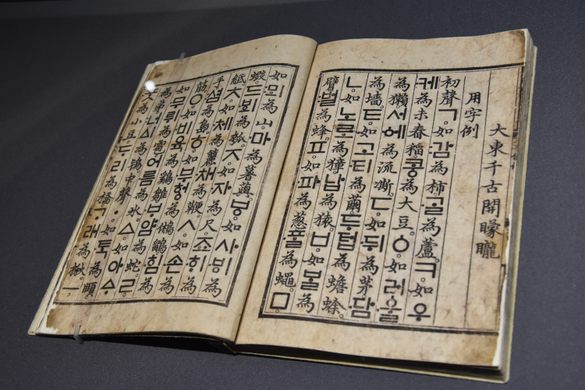Labeled with Love
Does the name Burkey Belser ring a bell? It should; he was a visionary graphic designer whose main claim to fame was designing the nutrition label that has appeared on packaged foods since 1994. Say what you will about the accuracy of the information on those labels (and what food producers laughably consider a “serving size”), the design and presentation of that information is impeccable graphic design.

Alas, Belser passed away this week at the age of 76. Says The Messenger:
Belser was an “absolute genius,” according to David A. Kessler, who served as FDA chief when the label was designed. “The label had enormous public health impact for millions and millions of people who rely on it every day,” Kessler told the Washington Post.
Belser founded his design firm Burkey Belser Inc. in 1978 and it had grown to a 40-employee company before he sold it in 2016.
In 1990, Congress passed the Nutrition Labeling and Education Act, which required food labeling but as no funds were allocated for graphic design, Belser and co. worked pro bono.
Belser and his team designed dozens of variants before arriving at the label that consumers have come to rely upon. They went through different colors and graph styles, while also trying to satisfy multiple stakeholders — all while making something that would be easy for consumers to read and understand on the fly.
“You not only have FDA as a player in the design, you have industry people who want to guide what the label says and does,” Belser said in 2014, according to the Post. “You have consumer groups, and they have an agenda. All three are doing battle day after day after day. ‘Do this, don’t do that.’”
Belser would compare the simplicity of the final design to an Apple iPod—and, indeed, the Washington Post once described Burkey as the “Steve Jobs of information design.”
And you know what? Food labeling worked.
Food labeling decreased consumer intakes of energy by 6.6% (95% CI= −8.8%, −4.4%, n=31), total fat by 10.6% (95% CI= −17.7%, −3.5%, n=13), and other unhealthy dietary options by 13.0% (95% CI= −25.7%, −0.2%, n=16), while increasing vegetable consumption by 13.5% (95% CI=2.4%, 24.6%, n=5). Evaluating industry responses, labeling decreased product contents of sodium by 8.9% (95% CI= −17.3%, −0.6%, n=4) and artificial trans fat by 64.3% (95% CI= −91.1%, −37.5%, n=3).
So thank you, Mr. Belser.
Piece of Cake
OK, this is probably not the most appetizing headline in the world: “Cutting into Alexa Edgerton’s Viral Cake Letters,” but Print magazine presents one of the highlights of this year’s “36 Days of Type,” “a project that invites designers, illustrators and visual artists to express their unique interpretation of the letters and numbers of the Latin alphabet.” And the entry by brand designer and lettering artist Alexa Edgerton really takes the cake.
the letters she created for the challenge look like delicious letter-shaped cakes fresh out of a whimsical bakery from a fairytale. Edgerton made four letters (A, L, E, and X), each built by hand using styrofoam, paint, and spackle.
Ah, so not actual cake. But still…

I stumbled on a video of someone making a fake cake online and found the whole process fascinating— which, honestly, is kind of a miracle considering my aversion to crafting. However, I love some kitschy bullshit, and when 36 Days of Type came around, it dawned on me that I could make a fake cake in the shape of a letter. As anyone who has participated in 36 Days of Type will know, it is a ton of work. Having partaken twice before, I didn’t think I had time to draw a letter every day, so I decided to use it as an excuse to try something new.
Kitschy BS, indeed.
Roll with It
Our Mount Monadnock Media Maven points us to South Korean artist Ilhwa Kim, who creates intricate, vibrant landscapes out of paper. Via This Is Colossal:
The South Korean artist rolls tight wads of Hanji paper, which she’s dyed primarily in greens and blues with occasional pinks and yellows, and binds the individual components in a rectangular form. Variances between the slim, tall seeds and the short, wider pieces add texture and depth to the aerial-inspired works that appear to look down at a settlement or pastoral scene from above.

Kim’s work will be on display—in a show called Tacticle Hands—at London’s HOFA Gallery.
Referring to the pieces as “living architecture,” the artist gravitates toward movement, conveying heaving breaths or the way a breeze can make a field of grass seem as if it’s dancing. “I create artworks that combine sculpture and painting in order to explore the richness, dynamism, and depth of sensory experience on canvas,” she says.
The show runs from September 29 to October 11.
A related “paper artist” is Laurie Brown, who describes her work as “paper in 3 dimensions.”
Her work is a painstakingly time-consuming process; large sheets of fine white paper are cut into strips of varying lengths and widths, individually hand-toned, rolled tightly, and secured with thread. Those individual spools of paper are then married together atop a fresh sheet of handmade paper, to create the finished composition. Each small spool is just a fraction of the whole, arranged to bring forth images which are sometimes subjective, at other times abstract. Within each completed piece there is a certain rhythm, designed to hold the gaze of its audience. Brown experiments with hue, texture, and pattern, to move the viewer's eye through each work of art. Large pieces consume pounds of paper, several spools of thread, and hundreds of hours to complete.

To check out more of her work and perhaps purchase it, you can visit her Etsy shop.
Stormy Weather
It’s a battle of the meteorologists out in St. Louis. From Riverfront Times:
Today in federal court, the parent company of KMOV (Channel 4) filed a lawsuit in federal court claiming that KSDK (Channel 5) stole the phrase “First Alert Weather” from them.
And, apparently, “First Alert Weather” is KMOV’s registered trademark.

The lawsuit, which is full of screenshots of local news, claims that in October, two months after KMOV started using “First Alert Weather,” KSDK began branding its meteorological coverage as “Weather First,” and that those two words were often in close proximity to the word “Alert.”
It gets more tedious.
KSDK has moved the word “Alert”— and placed it right between “First” and “Weather.” And if KMOV didn't like their three words being together on the KSDK screen, they really didn’t like KSDK adopting the phrase “First Alert Weather’ verbatim as their own.
We’re not surprised they couldn’t predict that was going to happen.
AI-Yi-Yi, Part the Infinity: Flat Soda
Now it’s getting silly (or sillier). In the most recent of moves to jump on the AI (or AI-esque) bandwagon, Coca-Cola has asked AI to help develop a new Coke flavor. Gizmodo did the tasting (so you don’t have to).
You ever close your eyes and expect a punch in the mouth, but receive a slight flick on the nose? Drinking Coke’s Y3000—short for “Year 3000"—flavor is like that. The tagline “Futuristic Flavored” may have you expecting bold flavors of a prosperous tomorrow, but that couldn’t be more off-base. The first time the bubbling liquid hits your tongue you expect the same acidic, carbonated sensation as a regular Coke, but the drink slithers to the back of the mouth and sits there, broiling with a numb triviality across your tastebuds. And then the flavor is gone, leaving you with a vague aftertaste of berries and sugar.
It’s not as bad as we were expecting.
My expectations were low, but Coca-Cola bottomed me out. Should we have suspected any less? AI is notoriously terrible at coming up with recipes, whether that’s alcoholic cocktails or money-saving meals that won’t outright kill you. Chatbots like OpenAI’s ChatGPT and Google’s Bard don’t have any inkling of the outcome of their recipes. They simply know what ingredients have sat alongside each other in the past, so it aggregates what may work well together. If Y3000 was actually developed alongside AI, one can imagine Coca-Cola might have needed to make some very important modifications to the recipe to actually make it edible.
While we are not completely averse to some potential uses of AI, a lot of it is just silly and more than a little pointless, more buzzwords than actual buzz.
The Write Stuff
In 1443, Korean King Sejong created a new writing system called Hangul, in an effort to improve his kingdom’s literacy. Prior to this, Korean was transliterated in Hanja, which was the ancient Chinese writing system and comprised tens of thousands of characters, making it a very complex to learn and use. So the raison d’être of Hangul was to make reading and writing simpler. Although it didn’t catch on until the 19th century, it did eventually become adopted as Korea’s national writing system.
So via Atlas Obscura, if you’re in Seoul, why not visit the National Hangeul Museum, established in 2014, dedicated to the linguistic history of the Korean language and its alphabet.
The permanent exhibit particularly focuses on the era of Korea’s hardship during the Imperial Japanese occupation. Hangul, as well as the Korean language itself, was heavily suppressed under Japanese rule from 1910 to 1945, despite its official recognition in 1894. It persevered through it all, used and studied in secret by people even under oppression.

Fred Cherrygarden
And of course every language needs a typewriter.
Standing out among the collection is an almost antique Underwood typewriter with a unique four-set arrangement of Hangul components. Invented in 1933 by Song Ki-ju, this is the oldest Korean typewriter to exist, a culturally important artifact in the language’s history.
Graphene Clears the Air
Was it a good week for graphene news? It’s always a good week for graphene news! A graphene-enhanced anti-corrosion solution to help improve air conditioner performance. From (who else?) Graphene-Info:
Air conditioning in coastal regions can be challenging due to the corrosive effects of salt air on the critical components, leading to costly maintenance and replacements for restaurateurs and hotel owners. To address the problem, Midea developed the patented Prime Guard Hyper Grapfin which is coated with graphene to increase the durability, performance, and energy efficiency of HVAC systems.
Pretty cool.
Pan in the Flash
If you’re like us, and we know we are, your collection of cookware easily exceeds the kitchen cabinet space available to house it. Via Core 77, one unique attempt at a solution: This Flügge cookware set by Simon Morgenstern and Robert Baumgart, Industrial Design students at the Germany's Bauhaus University Weimar.
Before:

After:

“The pot set is called ‘3-26’ because it consists of three components and has an outer diameter of 26 centimeters.”
Around the Webb, Part the Continuing: It’s the Freakiest Show
Maybe Bowie was wrong and it’s not Mars but Europa on which there’s life. Via LiveScience, the James Webb Space Telescope has detected “homemade” carbon dioxide on Europa, one of Jupiter’s moons, suggesting that that the icy satellite could possibly have life.
Europa, which is a little bit smaller than Earth's moon, is covered with a crust of water ice enveloping a saltwater ocean. The presence of liquid water makes Europa an intriguing object of exploration for scientists interested in extraterrestrial life. But until now, no one had shown that the ocean contained the proper molecules, particularly carbon, which is a fundamental building block of life on Earth.
The new detection by JWST is intriguing because the carbon dioxide does not seem to have been carried by a meteorite or asteroid, and it appears in a geologically young region of the moon called Tara Regio, suggesting the gas may have formed within the moon itself.
As it happens, we will soon get a chance to find out more about Europa:
Scientists are planning two missions to Europa in the upcoming years. NASA’s Clipper mission, expected to launch in 2024, will provide observations of the moon from orbit, with a focus on searching for molecules and conditions conducive to life. Meanwhile, the European Space Agency launched the Jupiter Icy Moons Explorer (JUICE) spacecraft in April; it will arrive at the gas giant in 2031. That craft will conduct 35 flybys of the three moons Europa, Ganymede, and Callisto.
The things we can do.
Sic Semper Panera
Says CNN, “Men, apparently, can’t stop thinking about the Roman Empire.” Really? Et tu, CNN? Granting the premise, there is apparently a Roman Empire TikTok trend, because of course there is.
For those unfamiliar,
What, you’re not surprised we’re not up on TikTok trends?
the “Roman Empire” trend originated a few weeks ago on social media in which women ask their husbands or boyfriends how often they thought about the legendary empire, with a surprising number of them claiming to think about it daily to multiple times a week.
The Roman Empire? Maybe the citizens of Troy, but Romans? Anyway, Panera has responded to this trend with what it is calling its “Roman Empire” menu. Sticklers for historical accuracy might want to stay away.
Although the menu items likely wouldn’t have been found in Rome 2,000 years ago, they are a collection of Panera’s iconic foods that it says fans can’t stop thinking about, including macaroni and cheese, cinnamon crunch bagels and, of course, a Caesar salad.
Now, Panera could, if it wanted (and if it wanted the Health Department to get involved), have a real Roman Empire menu. Via NPR:
The great Roman gourmet, Marcus Gavius Apicius, who compiled what is the only surviving cookbook of the Roman empire, De Re Coquinaria (The Art of Cooking), lists more than 400 recipes for camel heels, parrot, coxcombs, venison, pheasant, thrush, rabbit, goose liver, brain-stuffed sausages, peacock, flamingo, caviar-stuffed crayfish, cranes, ostrich, ham, legumes, vegetables, and an array of seafood from sea urchins to red mullet, bass, bonito, and snails, for which special spoons were designed.
And a Diet Coq. To go.
One of the Roman Empire’s more, shall we say, colorful emperors was Elagabalus, who is the poster child for why an 18-year-old should not become the emperor of Rome. At any rate, his banquets could run into even more trouble:
At one of these affairs, guests could expect up to 22 courses, with a menu of everything expensive and rare. Tables were piled high with such delicacies as camel’s heels, peacock tongues and ostrich brains (600 at one banquet alone), not to mention “peas with gold-pieces…and rice with pearls.” The boy-Emperor took a hands-on approach to party-planning, choosing each element carefully for its sensory impact. “He gave summer-banquets in various colours, one day a green banquet, another day an iridescent one, and next in order a blue one, varying them continually every day of the summer”, while the fish that he ate were cooked in a bluish sauce that preserved their natural colour, as though they were still in the sea-water.”
Businesses these days are all about creating experiences, and Panera could certainly create one, inspired by Elagabalus:
Once he smothered a group of diners beneath an avalanche of rose petals. On several occasions, he unleashed wolves and leopards on people without telling them the animals were tame and harmless.
Of course, that would be annoying if you were in Panera just to use the WiFi.
When in Rome, Think Like a Greek
Now, if you were to attend a Roman dinner—maybe there was a Panerus Panem back in third-century Rome—one challenge would be not necessarily the menu (depending on your appetite for the various parts of a camel), but the conversation. However, Atlas Obscura has you covered.
The other guests will be well-traveled and well-read, especially in the Greek literature popular with Roman elites. What if you don’t get their references? What if you can’t think of anything clever to say, and you never get invited to another dinner?
What if they’re not interested in the value of printing shipments?
After a moment’s panic, you breathe a sigh of relief and head for your library. Your social success is assured; you’ve just remembered that you own a copy of Deipnosophistae.
Written in Greek circa the year 200, it is variously translated as Banquet Wits or The Learned Banqueters, and its author, Athenaeus, describes the dinner parties he attended at a wealthy man’s villa in Rome.
These sumptuous affairs are highly fictionalized. The guests are a mix of historical figures, contemporaries, and invented characters, and their dialogue is written like informational articles, complete with citations. Each dish brought to the table inspires the diners to quote references from every genre of Greek literature. Deipnosophistae “will tell you how to cook oysters,” Cody says, “but it’ll also tell you all the lines of poetry that you should recite when the oyster course comes out.” For more obscure delicacies, there might be just one or two references. For figs, a common staple, Athenaeus pulls quotes from over 50 authors. In all, Deipnosophistaequotes from around 2,500 sources, drawn from hundreds of authors dating back centuries.
Likewise, you’ll want to know what poetry you should recite when you get your Panera broccoli cheddar soup.
Think of Deipnosophistae as an ancient food magazine, that also has recipes.
Deipnosophistae contains the oldest-known Greek recipe, for a grilled fish sprinkled with grated cheese, but also quotes the opinionated food critic Archestratus, who said that cheese “makes a mess” of good-quality seafood.
We’re just saying that if Panera really wanted to do their homework, they could have a real Roman Empire menu. Maybe Little Caesar’s will go that route.
Secret Sauce
OK, so if ancient Rome and/or Panera aren’t your thing, are you a fan of McDonald’s? And do you like brunch? If yes, then be sure to get to your local franchise at 10:35 a.m. as there is a secret “McBrunch Burger” that is only available for a few minutes a day. Says Food & Wine:
the “McBrunch Burger” is a glorious combination of McDonald’s breakfast menu — which its U.S. restaurants stop serving at 10:30 a.m.— and its rest-of-the-day staples. The McBrunch burger involves two cheeseburger patties, bacon, eggs, and a hash brown on top of a sesame seed bun, and you can only get this meal-straddling menu item in the sweet spot between when McDonald’s is wrapping up its breakfast service, and it’s starting its lunch rotation. And if you want to get ultra-specific, the eggs are preferably scrambled, not the round eggs used on McMuffins and other breakfast sandwiches.
So at 10:35 a.m., the McBrunch Burger is only available for a few minutes. No word on whether you can get a McMosa to go with it.
This Week in Printing, Publishing, and Media History
September 25
1690: Publick Occurrences Both Forreign and Domestick, the first newspaper to appear in the Americas, is published for the first and only time.
1897: American novelist, short story writer, and Nobel Prize laureate William Faulkner born.
1906: Leonardo Torres y Quevedo demonstrates the Telekino, guiding a boat from the shore, in what is considered to be the first use of a remote control.
1912: Columbia University Graduate School of Journalism is founded in New York City.
1929: English actor and screenwriter Ronnie Barker born.
1951: American actor and producer Mark Hamill born.
1956: TAT-1, the first submarine transatlantic telephone cable system, is inaugurated.
September 26
1888: Poet, playwright, critic, and Nobel Prize laureate T. S. Eliot born, not with a bang, but a whimper.
1905: Albert Einstein publishes the third of his Annus Mirabilis papers, introducing the special theory of relativity.
1910: Indian journalist Swadeshabhimani Ramakrishna Pillai is arrested after publishing criticism of the government of Travancore and is exiled.
1969: Abbey Road, the last recorded album by The Beatles, is released.
1973: Concorde makes its first non-stop crossing of the Atlantic in record-breaking time.
September 27
1825: The world’s first public railway to use steam locomotives, the Stockton and Darlington Railway, is ceremonially opened.
1840: Iconic cartoonist Thomas Nast born.
1891: Russian author and critic Ivan Goncharov dies (b. 1812).
1962: Rachel Carson’s Silent Spring is published, inspiring an environmental movement and the creation of the U.S. Environmental Protection Agency.
1998: The Google internet search engine retroactively claims this date as its birthday.
September 28
1891: American author and poet Herman Melville dies (b. 1819).
1909: American author and illustrator Al Capp born.
1935: French-Scottish actor, director, and producer, inventor of the Kinetoscope William Kennedy Dickson dies (b. 1860).
1951: CBS makes the first color televisions available for sale to the general public, but the product is discontinued less than a month later.
1952: American satirical novelist Christopher Buckley born.
1964: American comedian, actor, and singer Harpo Marx dies (b. 1888).
1966: French author and poet André Breton dies (b. 1896).
1970: American novelist, poet, essayist, and playwright John Dos Passos dies (b. 1896).
September 29
1547: Spanish novelist, poet, and playwright Miguel de Cervantes born.
1901: Italian-American physicist and academic, Nobel Prize laureate Enrico Fermi born.
1902: French journalist, author, and playwright Émile Zola dies (b. 1840).
1954: The convention establishing CERN (the European Organization for Nuclear Research) is signed.
2012: American publisher Arthur Ochs Sulzberger dies (b. 1926).
September 30
1939: NBC broadcasts the first televised American football game between the Waynesburg Yellow Jackets and the Fordham Rams. Fordham won, 34–7.
1947: The World Series, featuring the New York Yankees and the Brooklyn Dodgers, is televised for the first time. (The Yankees won.)
1980: Ethernet specifications are published by Xerox working with Intel and Digital Equipment Corporation.
October 1
1843: The News of the World tabloid begins publication in London.
1861: Mrs Beeton's Book of Household Management is published, going on to sell 60,000 copies in its first year and remaining in print until the present day.
1957: First appearance of In God we trust on U.S. paper currency.















Discussion
Only verified members can comment.